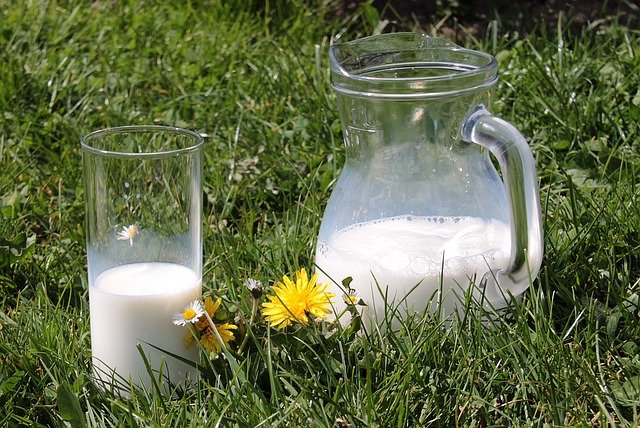Solving the dairy paradox: a food chain approach to protect cardiovascular health
Researchers at Reading are leading innovations in the dairy industry to make many of our favourite foods healthier, including milk. Eating a diet high in saturated fat is linked to an increased risk of cardiovascular diseases (CVD), which cause more than 150,000 deaths in the UK each year. Milk and dairy products contribute nearly a third of the UK population’s excessive intake of saturated fat, but they’re also an important source of a range of beneficial nutrients. As public health efforts continue to try to reduce the nation’s intake of saturated fat, researchers at Reading are striving to solve dairy’s health paradox.
Healthier, greener milk
A food chain approach
Professor Julie Lovegrove, Director of the Hugh Sinclair Unit of Human Nutrition at Reading, is untangling the complexity of the short and long term effects that milk and dairy products have on our bodies’ biochemistry and physiology. She believes that dairy foods of the future can be healthier for everyone.
Professor Lovegrove is working with Professor Ian Givens, Director of Reading’s Institute of Food, Nutrition and Health. Together they advocate the ‘food chain approach’ to making dairy healthier – made possible by the work for which Professor Givens became BBSRC Innovator of the Year in 2015.
Conventionally, when fats are removed from milk to create semi- and skimmed varieties, they remain in the food chain through their use in other products. But Givens found that it’s possible to modify the fat profile of milk by changing the diet of dairy cows. This approach completely eradicates a proportion of saturated fats from the food chain.
Interrogating an innovation
In a major MRC-funded trial (called RESET), Professor Lovegrove leads detailed analyses of how consumption of these modified dairy products impacts markers and risk factors of cardiovascular health and disease.
Using milk from cows fed Givens’ innovative diet, the team made long-life milk, Cheddar cheese and butter in Reading’s own food processing plant. These dairy products contained reduced saturated fats and increased monounsaturated fats compared to standard versions.
In the trial, around 50 adults made dietary swaps to Reading’s modified foodstuffs. In the volunteers, the modified dairy prevented the increase in blood lipid levels that were seen after consuming the conventional milk and milk products. Blood lipids including LDL cholesterol and triglycerides are a major risk factor for CVD.
On the market
Professor Givens’ initial work led Marks and Spencer to launch a Healthier Milk project in 2011, asking all their milk suppliers to switch their herds to a new diet that created milk with 6% less saturated fat.
And now the impact is set to spread further through a major European project, led by Professor Givens with Finnish dairy manufacturer Valio, to scale-up production of milk with even greater reductions in saturated fat and enrichment of monounsaturated fats.
Anu Turpeinen, Nutrition Manager at Valio, says “This project not only addresses the health issues of saturated fat, but also the carbon footprint of dairy products through reducing herds’ methane production.
“The research could make it possible to produce both healthier and environmentally friendly dairy products, thereby responding to consumers’ needs as well as supporting public health efforts. In the best case, we would hope to see these healthier dairy products on the market by 2021.”
A healthier future
Together, the work led by Givens and Lovegrove is adding to the evidence base for dietary advice and public health policy around saturated fats. Creation, testing and refinement of modified dairy foods will give people greater access to more choice as they try to make decisions for their health.
Further information
- Visit the staff profiles of Professor Lovegrove and Professor Givens for their contact details and links to their published research
- Find out more about M&S Healthier Milk.
- Learn more about the project which is funded by EIT Food and is a partnership with the University of Helsinki.
Related reading
- Givens, D. I. (2017) Saturated fats, dairy foods and health: a curious paradox? Nutrition Bulletin, 42 (3). pp. 274-282. ISSN 1471-9827 doi: https://doi.org/10.1111/nbu.12283
- Guo, J., Astrup, A., Lovegrove, J. A., Gijsbers, L., Givens, I. and Soedamah-Muthu, S. S. (2017) Milk and dairy consumption and risk of cardiovascular diseases and all-cause mortality: dose-response meta-analysis of prospective cohort studies. European Journal of Epidemiology, 32 (4). pp. 269-287. ISSN 0393-2990 doi: https://doi.org/10.1007/s10654-017-0243-1
- Livingstone, K. M., Humphries, D. J., Kirton, P., Kliem, K. E., Givens, D. I. and Reynolds, C. K. (2015) Effects of forage type and extruded linseed supplementation on methane production and milk fatty acid composition of lactating dairy cows. Journal of Dairy Science, 98 (6). pp. 4000-4011. ISSN 0022-0302 doi: https://doi.org/10.3168/jds.2014-8987

